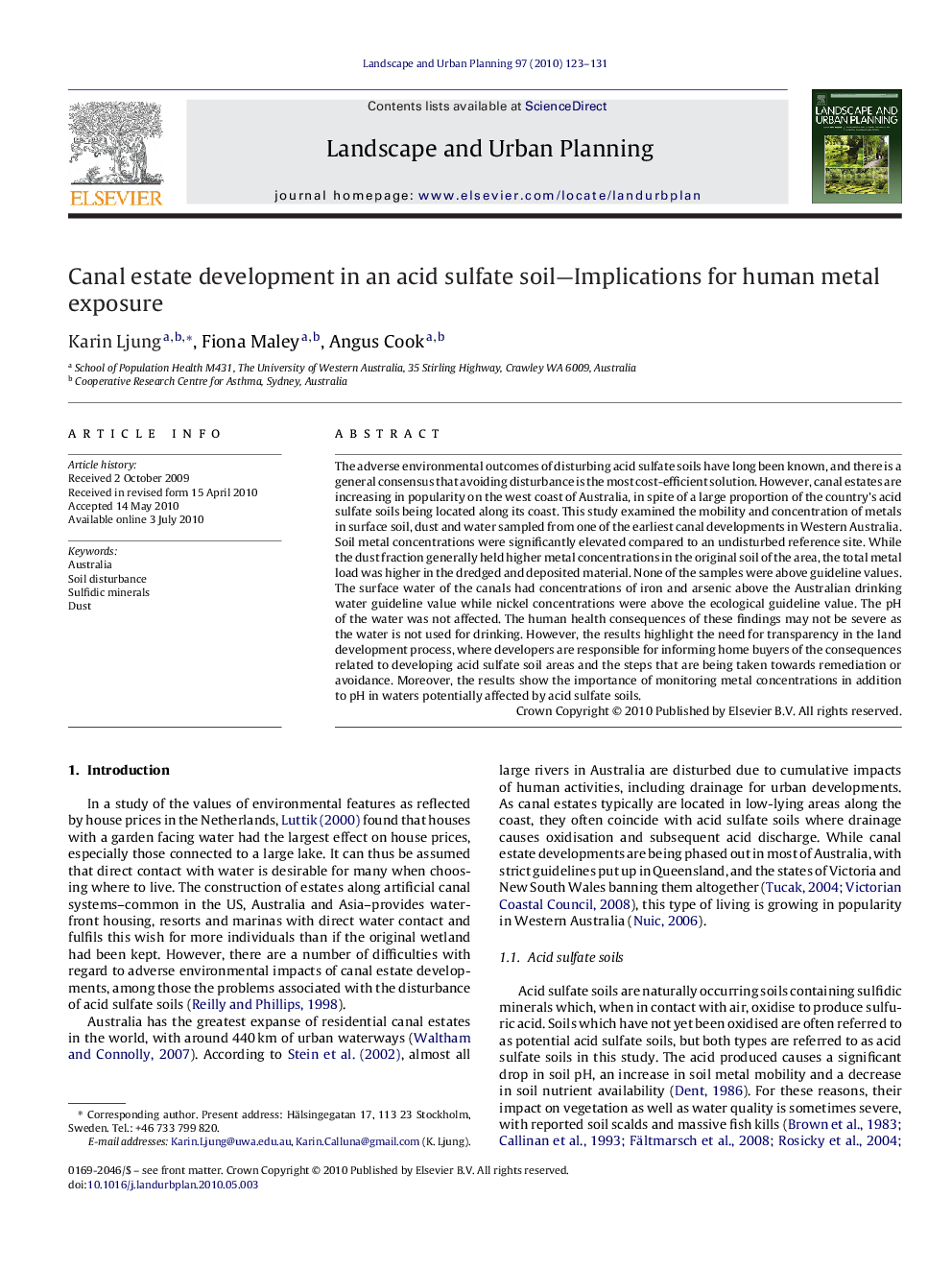| کد مقاله | کد نشریه | سال انتشار | مقاله انگلیسی | نسخه تمام متن |
|---|---|---|---|---|
| 1050083 | 945661 | 2010 | 9 صفحه PDF | دانلود رایگان |

The adverse environmental outcomes of disturbing acid sulfate soils have long been known, and there is a general consensus that avoiding disturbance is the most cost-efficient solution. However, canal estates are increasing in popularity on the west coast of Australia, in spite of a large proportion of the country's acid sulfate soils being located along its coast. This study examined the mobility and concentration of metals in surface soil, dust and water sampled from one of the earliest canal developments in Western Australia. Soil metal concentrations were significantly elevated compared to an undisturbed reference site. While the dust fraction generally held higher metal concentrations in the original soil of the area, the total metal load was higher in the dredged and deposited material. None of the samples were above guideline values. The surface water of the canals had concentrations of iron and arsenic above the Australian drinking water guideline value while nickel concentrations were above the ecological guideline value. The pH of the water was not affected. The human health consequences of these findings may not be severe as the water is not used for drinking. However, the results highlight the need for transparency in the land development process, where developers are responsible for informing home buyers of the consequences related to developing acid sulfate soil areas and the steps that are being taken towards remediation or avoidance. Moreover, the results show the importance of monitoring metal concentrations in addition to pH in waters potentially affected by acid sulfate soils.
Journal: Landscape and Urban Planning - Volume 97, Issue 2, 30 August 2010, Pages 123–131